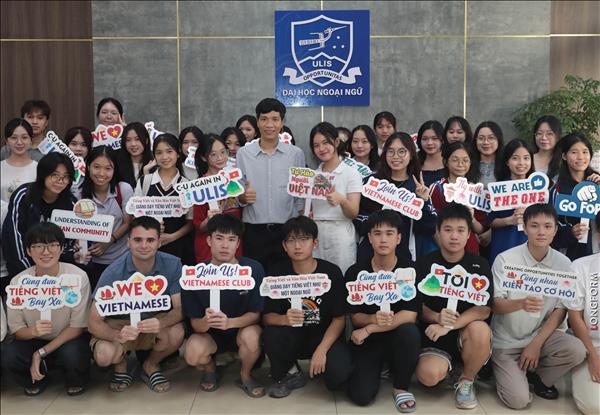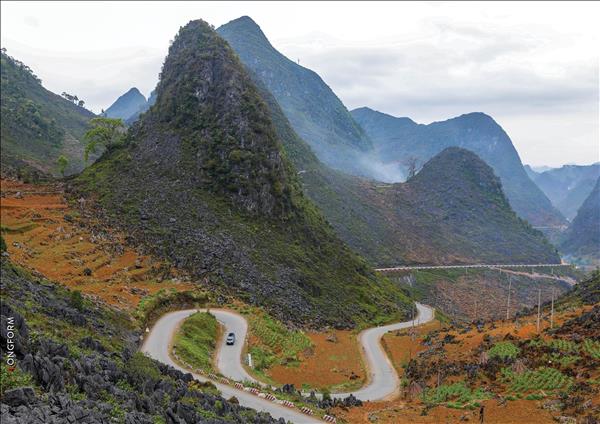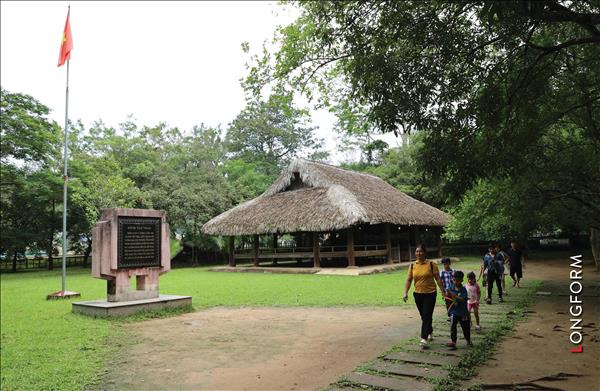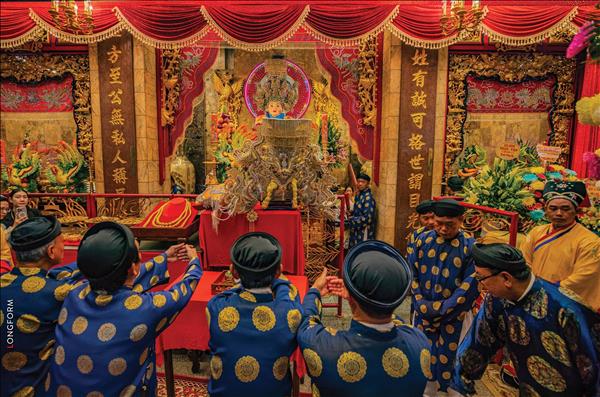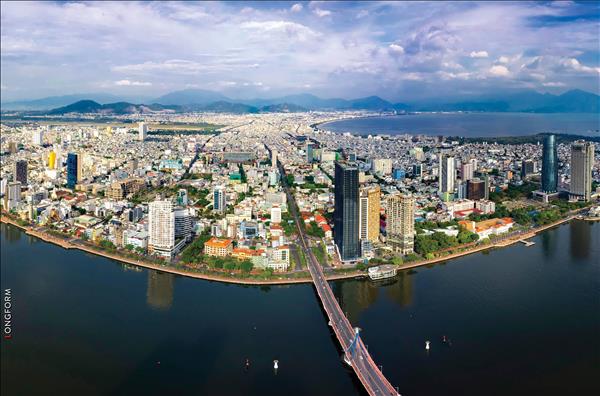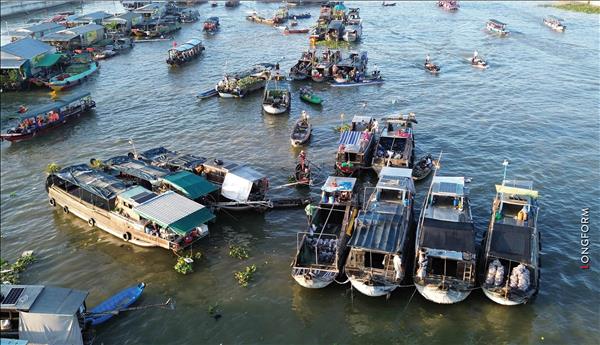Highlights of the DMZ tour and potential for marine tourism
Before 1975, during the war against the US, the 17th parallel in Quang Tri was known worldwide as a demilitarized zone, also known as the most terrifying temporary military frontier (DMZ - Demilitarized Zone) dividing the South and North of Vietnam.
At this DMZ, the American and forces of the Saigon regime not only dropped thousands of tons of bombs and toxic chemicals. They also developed many impressive war theories to cut off the attack path of the North Vietnamese army as well as to eliminate the desire for peace and unification of the people of the South and North.
It was in this province that many places have become an unforgettable memory of a traumatic and devastating DMZ such as the McNamara electric fence, Ta Con airport, Vinh Moc tunnels, Vay village, Road 9 - Khe Sanh, Tien islet, Mieu slope and Hien Luong bridge - Ben Hai river.
The war is over, wartime wounds are slowly healing and many people around the world including American veterans have returned to Quang Tri. Here, they go on "DMZ tours" with the desire to discover the mysterious things about this land once known as the "dead coordinate".
Today, the type of DMZ tour is probably only available in Korea and Vietnam. This kind of tour always has a special attraction, especially for foreign tourists, because it not only evokes people's imagination of a sensitive, dangerous and deadly military confrontation area but also historical problems of the times.
While in Korea, the DMZ tours often take tourists to visit certain restricted areas in the current demilitarized zone between South Korea and North Korea. In Quang Tri these tours will take tourists directly to explore the massive historical system of landmarks, bases and military complexes of the 17th parallel DMZ region.
Quang Tri DMZ tour itinerary usually takes place in one day. According to the itinerary, from Dong Ha, visitors will visit Road 9 where the Road 9-Khe Sanh campaign took place, which is known as the "second battle of Dien Bien Phu" in Vietnam. It is where Rockpile hill, Ta Con airport and the Khe Sanh base are located. Next, visitors will be taken to visit the place of Tien islet-Mieu slope, which is considered a US base and the "eye of god" of the McNamara electric fence. From here visitors will continue to visit the special national relic site - "Hien Luong bridge-Ben Hai river", the most important stop on the DMZ tour at the 17th parallel. It includes Hien Luong bridge which symbolizes the pain that separates the South and the North, the police station at the border line, the observatory, the loudspeaker system with a large capacity used to propagate the struggle to the other side of the line, the museum and the statue cluster "Aspiration for unification". From Hien Luong bridge, visitors will visit the Vinh Moc Tunnels, a unique military work with an underground tunnel system. The total length is more than 2,000m, divided into three floors, the deepest floor is more than 20m, and was used as a place for the people of Vinh Linh district, Quang Tri province to shelter.
The DMZ tour is a unique type of tourism creating its own tourism brand in Quang Tri province, so it is interested in investing and exploiting its own strengths to bring a one-of-a-kind war experience tour for domestic and foreign tourists.
In addition to the strength of the DMZ tour, Quang Tri is also emerging as a land with great potential for island tourism with a coastline of more than 75km with many beautiful untouched beaches such as Cua Viet, Cua Tung, My Thuy, Vinh Thai, Gia Dang and especially Con Co island, a beautiful unspoiled island known as "pearl island" in the East Sea.
With this potential, Quang Tri has a strategy to develop island tourism into the strength of the locality, in which the idea of building a "triangle" of sea tourism of Cua Tung-Cua Viet-Con Co island is the focus to attract domestic and foreign investors to invest in developing Quang Tri into a leading island resort center in the central region.
Expand East-West Economic Corridor
After the war, Quang Tri was left in ruins. People were destitute, the land was not only arid, but most of it was polluted with bombs and mines that could not be cultivated. However, today, Highway 9, once a famous route during the war with the Road 9-Khe Sanh campaign, has been transformed significantly because this is not just the Vietnam - Laos main trade road but also an important bridgehead on the 1,450km EWEC linking 4 countries Vietnam - Laos - Thailand and Myanmar.
Along National Highway 9, passing through the two mountainous districts of Dakrong and Huong Hoa, the two sides of the road are covered in green forests with tens of thousands of hectares for logging, nearly 5,000 hectares of coffee and more than 4,500 hectares of bananas. Many other cultivated areas have high economic value.
Huong Hoa district is gradually becoming the wind power center of the central region, attracting 84 projects with a total capacity of over 4,000 MW, of which 31 projects have been approved for planning, and 53 projects have been submitted to the Ministry of Industry and Trade for consideration and implementation of the plan.
Regarding trade, at the first point of National Highway 9, Cua Viet seaport in Gio Linh district with 3 berths and 1 buoy wharf can accommodate ships with tonnage from 2,000 to 40,000 tons. That is not to mention the possibility that Road 9 can be easily connected to Chan May port (Hue) and Tien Sa port (Da Nang) located not far south, so it is very convenient for goods circulation by searoad from the countries in the EWEC region to other countries in the region.
In addition, the Lao Bao international border gate and Lao Bao special economic trade zone, which has been a bustling import-export hub for many years, is being invested in by the government from 2021 to 2025, in industry, trade, tourism and cooperation with other countries in the region.
According to the general development orientation, Quang Tri strives to become the energy center of the central region by 2030. The province will attract investment; strongly develop transportation services, warehouse networks, yards and logistics services to soon become a cargo transshipment point for countries in the region by 2030. Quang Tri will research and develop the Lao Bao economic-trade zone in association with urban development orientation, cross-border trade and logistics services. Quang Tri will also develop tourism into an economic branch in the direction of sea and island, resort tourism; connect Quang Tri historic tourism with local tourism in the region and East-West economic corridor.
Le Quang Tung, member of the Party Central Committee, Secretary of the Quang Tri Provincial Party Committee, said that in the term 2020-2025, Quang Tri aims to become a province with a high average development level of the country by 2025 and belong to the group of better provinces of the country by 2030. Road 9 with glorious victories will become a key development of the province with orientations on energy, international freight transportation, trade and tourism, attracting investment and international economic integration
Before 1975, during the war against the US, the 17th parallel in Quang Tri was known worldwide as a demilitarized zone, also known as the most terrifying temporary military frontier (DMZ - Demilitarized Zone) dividing the South and North of Vietnam.
At this DMZ, the American and forces of the Saigon regime not only dropped thousands of tons of bombs and toxic chemicals. They also developed many impressive war theories to cut off the attack path of the North Vietnamese army as well as to eliminate the desire for peace and unification of the people of the South and North.
It was in this province that many places have become an unforgettable memory of a traumatic and devastating DMZ such as the McNamara electric fence, Ta Con airport, Vinh Moc tunnels, Vay village, Road 9 - Khe Sanh, Tien islet, Mieu slope and Hien Luong bridge - Ben Hai river.
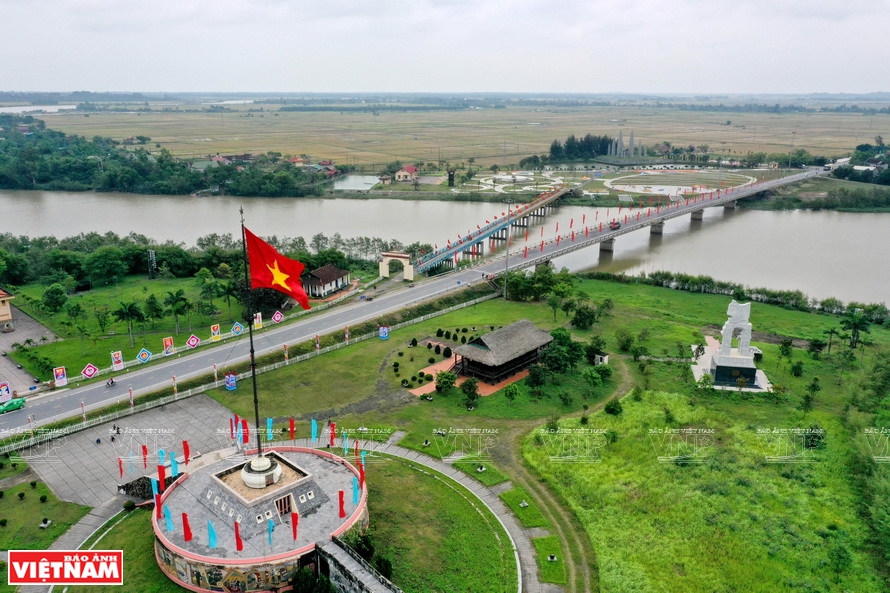 Hien Luong bridge (the small bridge on the left) and Ben Hai river on the 17th parallel in Quang Tri which divided the South and North of Vietnam in the war against the US, now is the Hien Luong-Ben Hai historical relic site. Photo: Ho Cau 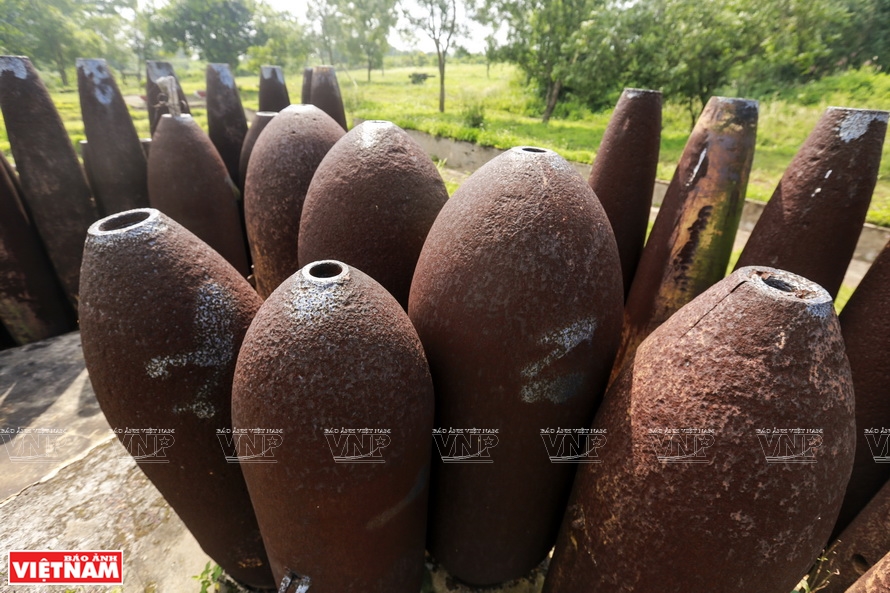 American bomb shells left over from the war in Quang Tri. Photo: Viet Cuong / VNP The giant loudspeaker used by the North Vietnamese to broadcast information across the border line when the country was divided. Photo: Thanh Hoa / VNP  A corner of the Ta Con airbase relic, an important base cluster of the McNamara electric fence built by the US army in Quang Tri. Photo: Viet Cuong / VNP 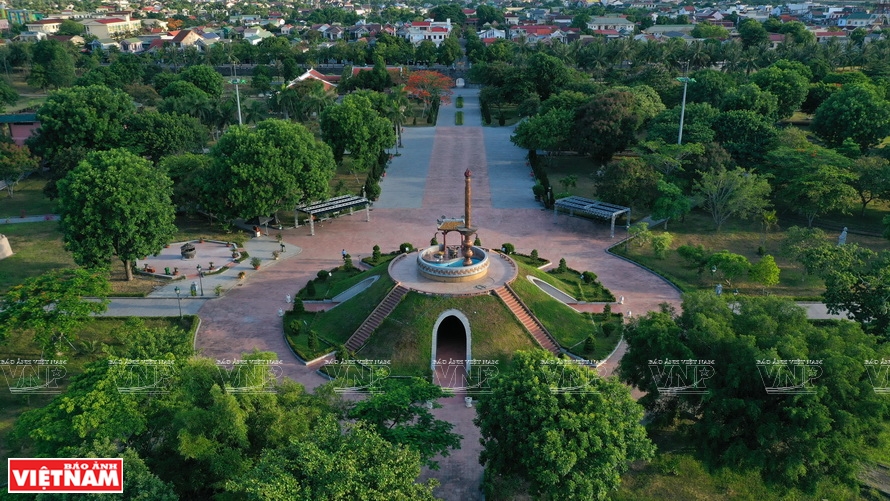 Quang Tri ancient citadel is a special national relic. After 81 fierce days and nights of fighting in the summer of 1972 against US troops, the citadel was almost destroyed by thousands of tons of bombs released by the US army. Photo: Ho Cau 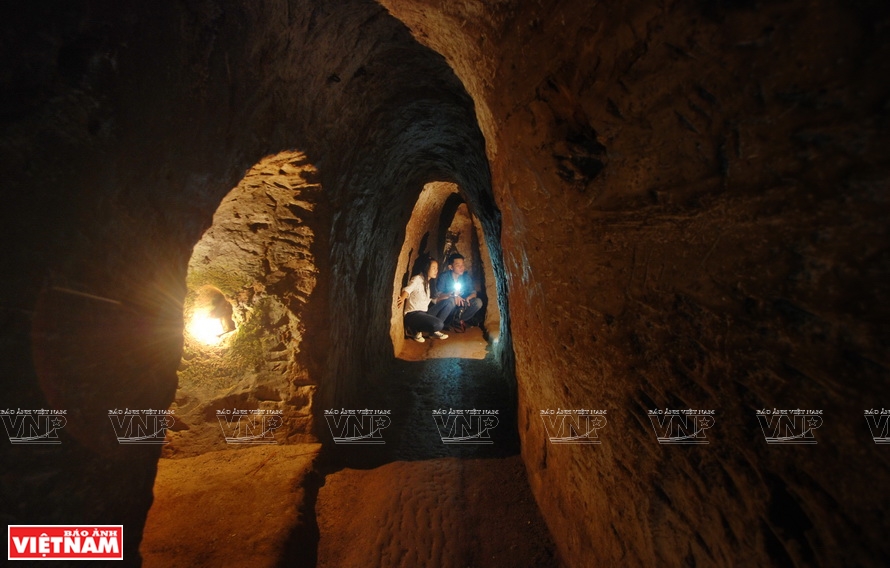 DVinh Moc Tunnels - special national relic site. Photo: Ho Cau
Foreign tourists offer incense at Truong Son National Martyrs’ Cemetery in Quang Tri.
Photo: Thanh Hoa / VNP - Foreign tourists visit Vinh Moc Tunnels - special national relic site. Photo: Thanh Hoa / VNP 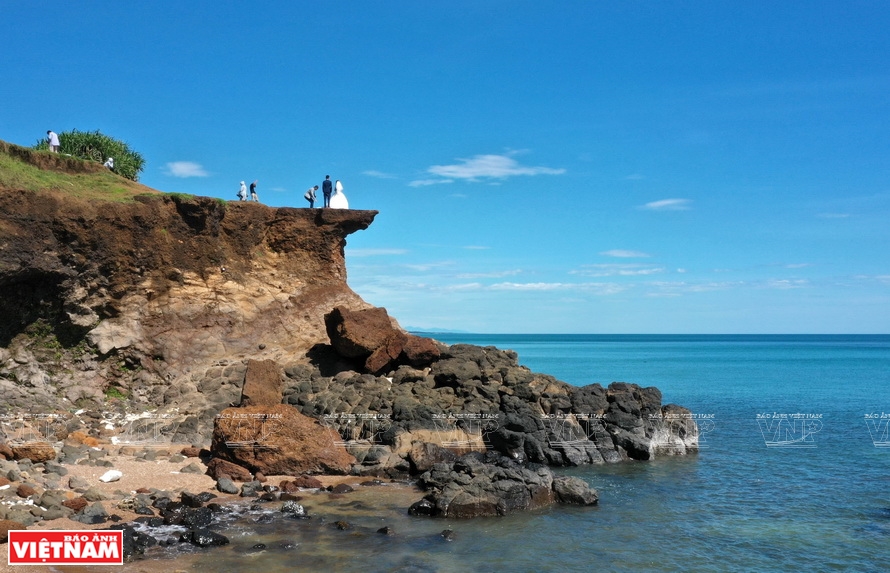 Treo cape in Vinh Linh district, Quang Tri. Photo: Ho Cau 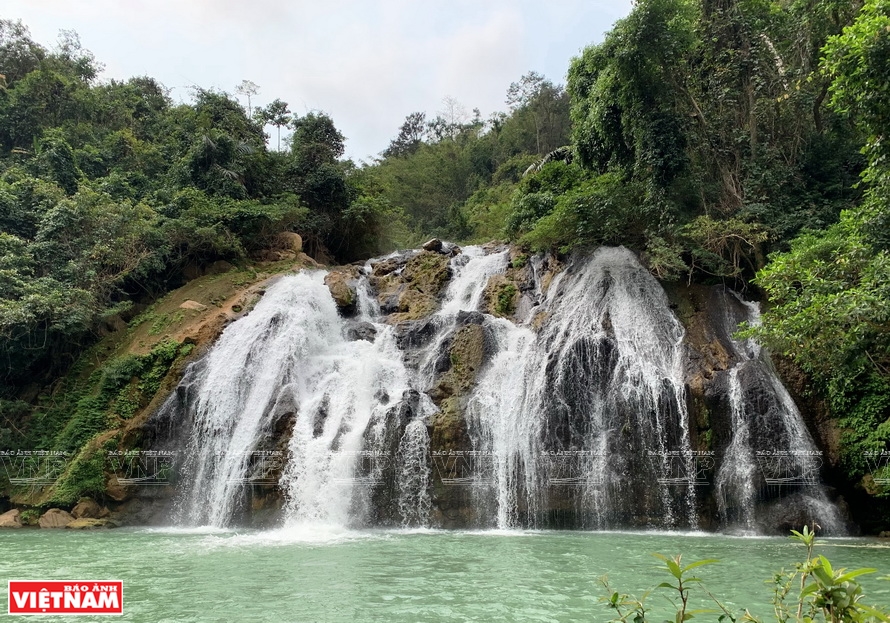
Ta Puong waterfall in Huong Hoa district, Quang Tri province. Photo: Ho Cau
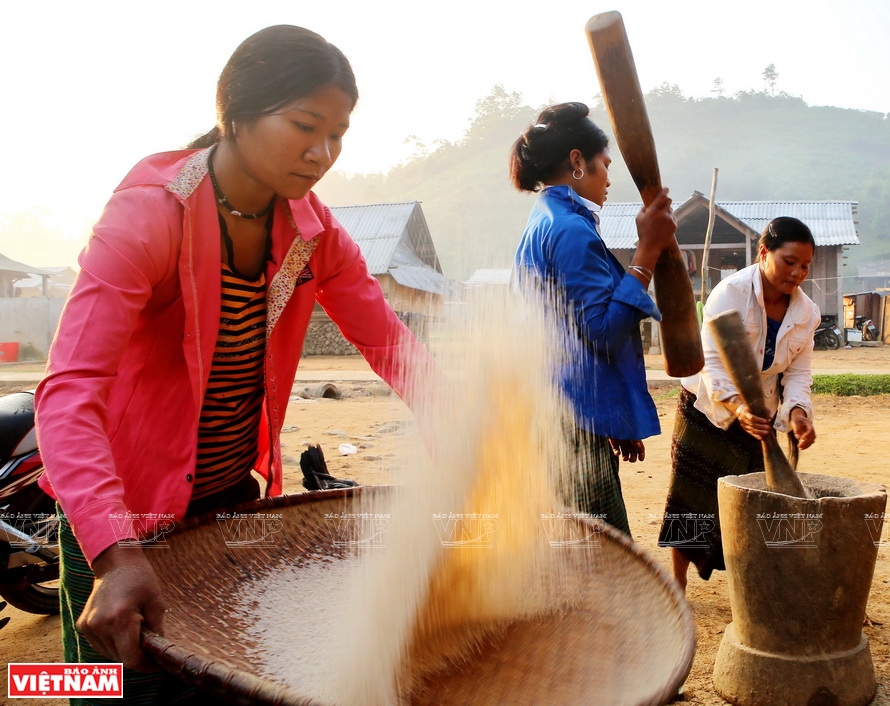
Life in the ethnic minority village in the central highlands of Quang Tri. Photo: Ho Cau

The pristine beauty of Cua Tung beach in Quang Tri. Photo: Ho Cau
|
The war is over, wartime wounds are slowly healing and many people around the world including American veterans have returned to Quang Tri. Here, they go on "DMZ tours" with the desire to discover the mysterious things about this land once known as the "dead coordinate".
Today, the type of DMZ tour is probably only available in Korea and Vietnam. This kind of tour always has a special attraction, especially for foreign tourists, because it not only evokes people's imagination of a sensitive, dangerous and deadly military confrontation area but also historical problems of the times.
While in Korea, the DMZ tours often take tourists to visit certain restricted areas in the current demilitarized zone between South Korea and North Korea. In Quang Tri these tours will take tourists directly to explore the massive historical system of landmarks, bases and military complexes of the 17th parallel DMZ region.
Quang Tri DMZ tour itinerary usually takes place in one day. According to the itinerary, from Dong Ha, visitors will visit Road 9 where the Road 9-Khe Sanh campaign took place, which is known as the "second battle of Dien Bien Phu" in Vietnam. It is where Rockpile hill, Ta Con airport and the Khe Sanh base are located. Next, visitors will be taken to visit the place of Tien islet-Mieu slope, which is considered a US base and the "eye of god" of the McNamara electric fence. From here visitors will continue to visit the special national relic site - "Hien Luong bridge-Ben Hai river", the most important stop on the DMZ tour at the 17th parallel. It includes Hien Luong bridge which symbolizes the pain that separates the South and the North, the police station at the border line, the observatory, the loudspeaker system with a large capacity used to propagate the struggle to the other side of the line, the museum and the statue cluster "Aspiration for unification". From Hien Luong bridge, visitors will visit the Vinh Moc Tunnels, a unique military work with an underground tunnel system. The total length is more than 2,000m, divided into three floors, the deepest floor is more than 20m, and was used as a place for the people of Vinh Linh district, Quang Tri province to shelter.
The DMZ tour is a unique type of tourism creating its own tourism brand in Quang Tri province, so it is interested in investing and exploiting its own strengths to bring a one-of-a-kind war experience tour for domestic and foreign tourists.
In addition to the strength of the DMZ tour, Quang Tri is also emerging as a land with great potential for island tourism with a coastline of more than 75km with many beautiful untouched beaches such as Cua Viet, Cua Tung, My Thuy, Vinh Thai, Gia Dang and especially Con Co island, a beautiful unspoiled island known as "pearl island" in the East Sea.
With this potential, Quang Tri has a strategy to develop island tourism into the strength of the locality, in which the idea of building a "triangle" of sea tourism of Cua Tung-Cua Viet-Con Co island is the focus to attract domestic and foreign investors to invest in developing Quang Tri into a leading island resort center in the central region.
Expand East-West Economic Corridor
After the war, Quang Tri was left in ruins. People were destitute, the land was not only arid, but most of it was polluted with bombs and mines that could not be cultivated. However, today, Highway 9, once a famous route during the war with the Road 9-Khe Sanh campaign, has been transformed significantly because this is not just the Vietnam - Laos main trade road but also an important bridgehead on the 1,450km EWEC linking 4 countries Vietnam - Laos - Thailand and Myanmar.
Along National Highway 9, passing through the two mountainous districts of Dakrong and Huong Hoa, the two sides of the road are covered in green forests with tens of thousands of hectares for logging, nearly 5,000 hectares of coffee and more than 4,500 hectares of bananas. Many other cultivated areas have high economic value.
Huong Hoa district is gradually becoming the wind power center of the central region, attracting 84 projects with a total capacity of over 4,000 MW, of which 31 projects have been approved for planning, and 53 projects have been submitted to the Ministry of Industry and Trade for consideration and implementation of the plan.
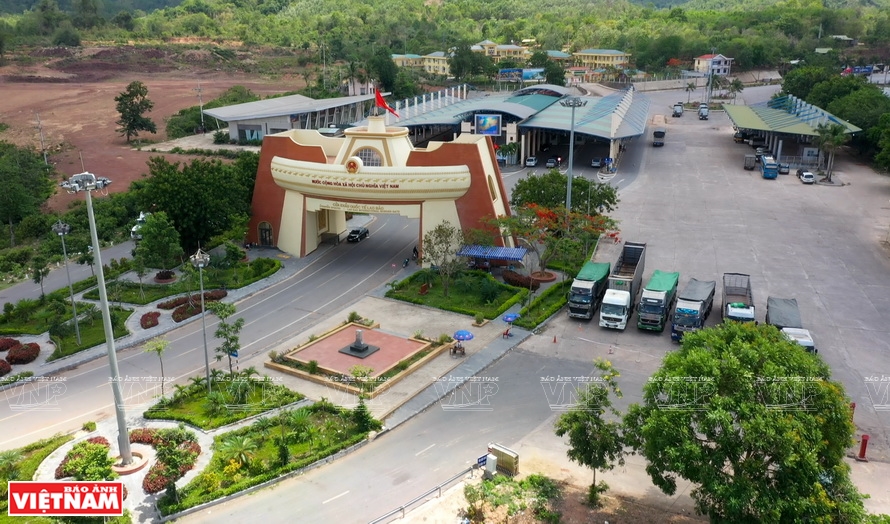 Lao Bao international border gate, an important connection point on the East-West economic corridor. Photo: Ho Cau  Quang Tri province enjoys great potential for wind power development. Photo: Ho Cau 
Quang Tri has potential in the rubber latex processing industry. Photo: Ho Cau

Wood processing industry for export in Quang Tri. Photo: Ho Cau
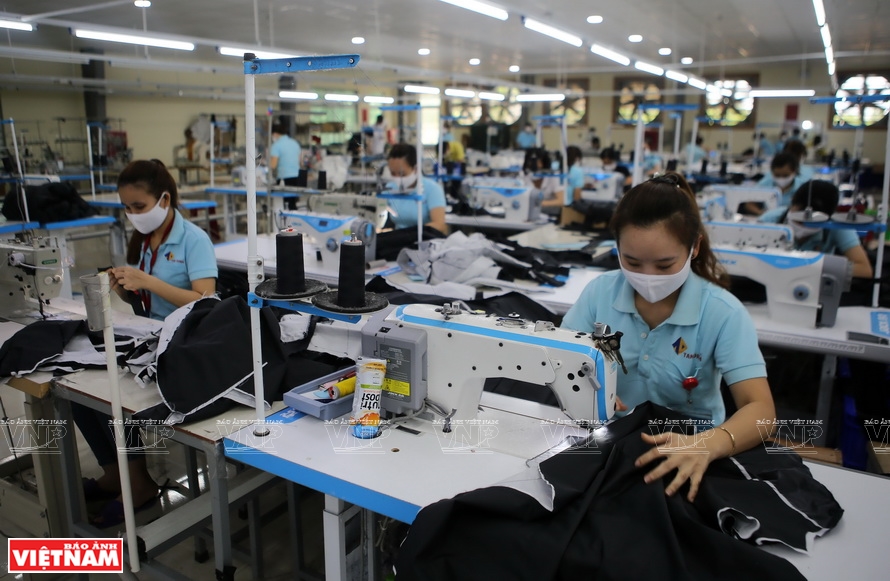 Export garment industry in Quang Tri. Photo: Ho Cau 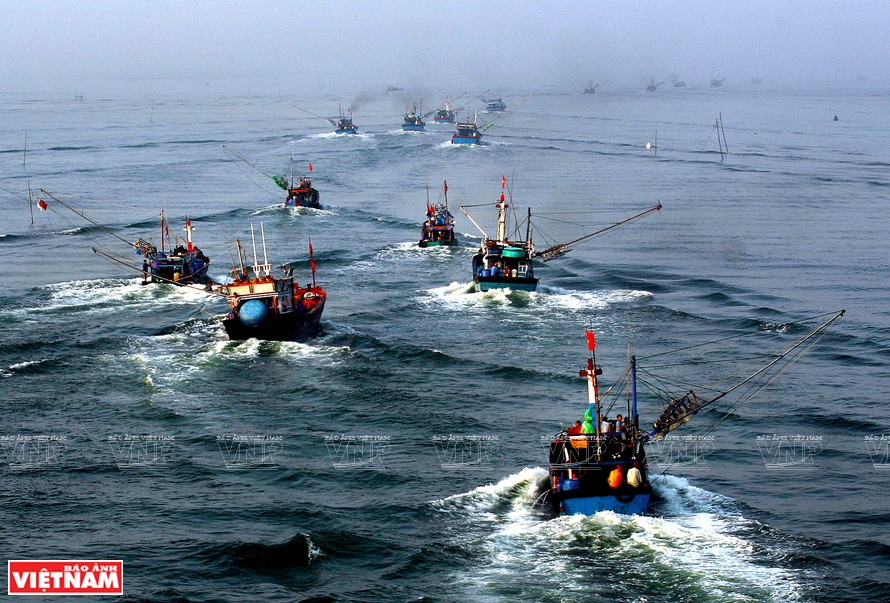 Quang Tri offshore fishing vessels. Photo: Ho Cau 
Cua Viet fishing port, Quang Tri. Photo: Ho Cau
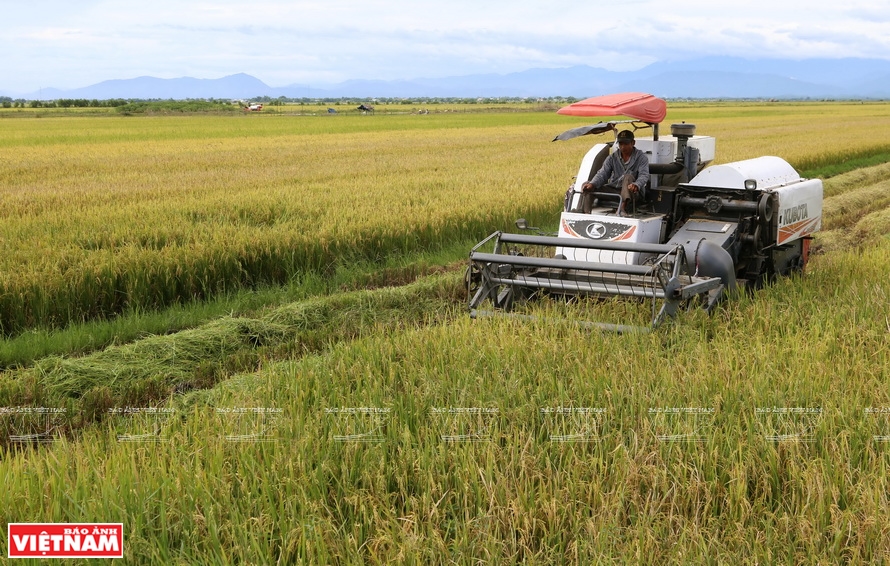 A large field with high positivity in Quang Tri. Photo: Ho Cau 
Pepper harvest season in Vinh Linh district. Photo: Ho Cau
|
Regarding trade, at the first point of National Highway 9, Cua Viet seaport in Gio Linh district with 3 berths and 1 buoy wharf can accommodate ships with tonnage from 2,000 to 40,000 tons. That is not to mention the possibility that Road 9 can be easily connected to Chan May port (Hue) and Tien Sa port (Da Nang) located not far south, so it is very convenient for goods circulation by searoad from the countries in the EWEC region to other countries in the region.
In addition, the Lao Bao international border gate and Lao Bao special economic trade zone, which has been a bustling import-export hub for many years, is being invested in by the government from 2021 to 2025, in industry, trade, tourism and cooperation with other countries in the region.
According to the general development orientation, Quang Tri strives to become the energy center of the central region by 2030. The province will attract investment; strongly develop transportation services, warehouse networks, yards and logistics services to soon become a cargo transshipment point for countries in the region by 2030. Quang Tri will research and develop the Lao Bao economic-trade zone in association with urban development orientation, cross-border trade and logistics services. Quang Tri will also develop tourism into an economic branch in the direction of sea and island, resort tourism; connect Quang Tri historic tourism with local tourism in the region and East-West economic corridor.
Le Quang Tung, member of the Party Central Committee, Secretary of the Quang Tri Provincial Party Committee, said that in the term 2020-2025, Quang Tri aims to become a province with a high average development level of the country by 2025 and belong to the group of better provinces of the country by 2030. Road 9 with glorious victories will become a key development of the province with orientations on energy, international freight transportation, trade and tourism, attracting investment and international economic integration
Story: Thanh Hoa Photos: Ho Cau, Thanh Hoa, Viet Cuong Translated by Hong Hanh

